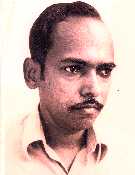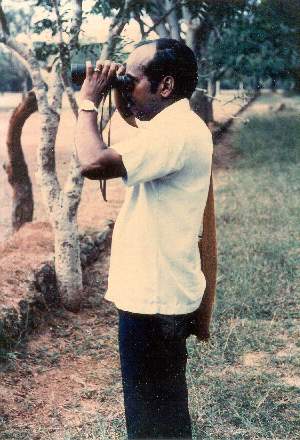
Home | Biodata | Biography | Photo Gallery | Publications | Tributes
Nature Study

 |
Home | Biodata | Biography | Photo Gallery | Publications | Tributes Nature Study |
 |
Dr. Siromoney was fascinated with plant and animal life everywhere, especially in Tambaram and Vedanthangal. He shared all his observations with young and old, year after year, enthusing students and faculty to take up research. He kept meticulous record of his observations and documented them by publishing frequently in the College Magazine and the Newsletter for Birdwatchers . "From a Campus Resident's Diary" that appeared in the 1982 MCC Magazine conveys Dr. Siromoney's approach, interest, and capacity to communicate significant information in simple and captivating language. His short account of the Egyptian vultures of Thirukkalukundram reveals his choice of subjects, methods of observation and documentation of valuable information.
Dr. Siromoney considered the more than 360 acres of MCC campus a self-declared sanctuary. He was very familiar with the contributions made by the Barnes, who more than anyone else, were responsible for the wealth of vegetation of the campus and early recording of plant and bird life. Dr. Siromoney chose to build on this foundation both by his own observations and by collaboration with others interested in natural history. A 1939 checklist of Barnes recorded 83 species of birds on the campus. Dr. Siromoney made careful recording over many years and presented a checklist of birds of Tambaram and Vedanthangal in 1971. This list had nearly doubled the birds of Tambaram to 149, and has become a valuable source for all further studies and comparisons. His interests in birds included feeding and nesting bahaviour, bird migration, and the unusual behaviour witnessed at Vedanthangal during the 1981 total solar eclipse.
It was at the beginning of the year 1960 that butterflies and birds invited Dr. Siromoney's attention. His 1978 checklist has become the standard reference for others who have continued research on butterflies of Tambaram, be it for M.Phil. or school projects. Some 80 species of butterflies and their larval host plants are now well documented in the Tambaram area.
Cultural heritage and history was an essential component of Dr. Siromoney's outlook on life. He was fond of relating life around him to their references in ancient Tamil literature. In a 1976 article in the MCC Magazine he drew attention to Tambaram plants mentioned in Sangam literature. Thus the kandal (Gloriosa superba), thondai (Capparis zeylanica) and other common but culturally important plants began to be well known to students and teachers through his efforts. Long before ethnobotany became an important field of botanical studies, Dr. Siromoney collaborated with colleagues and undertook studies on the medicinal plants of the Narikorava tribe. His publications on fossils of Thiruvakkarai, and close to home at Sriperumbudur, represent his strong interest in educating the college community about the geological past of the land they lived in.
It was this interest in locating one's own
place in space and time that made Dr. Siromoney get deeply involved in
epigraphy. From 1973 till his last days he was studying inscriptions and
revealing the stories they told. His contributions in epigraphy ranged from
teaching students to make estampages to deciphering previously unrecorded
inscriptions and developing an expert system for Indian epigraphy. He had many
collaborators in this area both in Tambaram and elsewhere. He experimented with
the use of computers to enhance images of poor-quality inscriptions. He revealed
several new Tamil Brahmi inscriptions from Madurai region and drew attention to
the presence of pulli and other features unique to Tamil Brahmi.
Interest in the origin of the Brahmi script resulted in a novel proposal
published in 1977 that the script was invented at a specific time, perhaps by
one individual, from two basic designs. Other publications dealt with the
origin, evolution and reform of the Tamil script. Among his outstanding original
contributions is the collaborative publication in Tamil of the entire
Thirukkural with various sections written in ancient to modern scripts. Dr. Siromoney hoped that one could learn to read inscriptions of every age with the help of this book.
- Dayanandan P. (Student in Botany, Colleague and Friend: 1964-88)
Currently: Head, Department of Botany, Madras Christian College.
I Birds
II Butterflies
III Plants And trees
IV Others
Birds